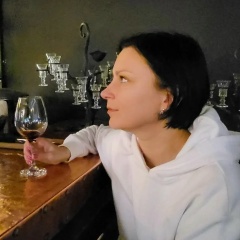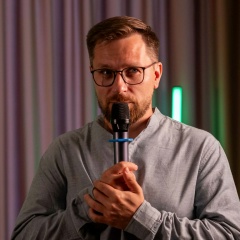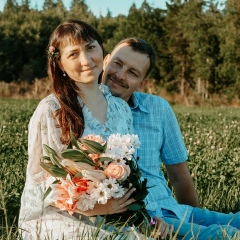Происходящее в Екатеринбурге пытаются свести к простым бинарным оппозициям “клерикализм-антиклерикализм”, “новая Россия-старая Россия” и так далее. Но история там куда сложнее.
Почти любой современный российский глава региона видит большой, красивый в его понимании храм (мечеть, дацан) как наследие собственного правления. Нужно что-то после себя оставить. И непременно на очень видном месте. В центре. Для него это ценностное и политическое комбо. И внукам будет что показать. И из Кремля похвалят.
Можно, конечно, оставить после себя большой парк, станцию метро, ледовый дворец, поразительный музей или театр, передовую больницу, новый терминал аэропорта или что-то подобное циклопическое (и оно часто идёт в комплекте с храмом). Но с прочими вещами всё гораздо сложнее с финансированием. И везёт не всем.
Храм же можно создать на средства крупного местного бизнеса. И стоит он не таких уж больших денег по сравнению с вышеперечисленными инфрастурными проектами. И содержать его потом за бюджетный счёт не надо. Бизнес, в свою очередь, обычно получает от власти за возведение большого имиджевого храма какие-то плюшки от властей, которые обычно остаются в тени. В случае Екатеринбурга оставить плюшки в тени не вышло. За храмом на рендере торчит 30-этажное здание и другие постройки.
В чём особенности Екатеринбурга? Там очень плотная застройка в центре. И вообще это один из самых компактных крупных городов России. Практически все ценные точки там уже очень востребованы горожанами. Сквер, на месте которого собираются строить храм, очень востребован.
Вторая особенность города, вытекающая из плотности застройки, - в Екатеринбурге даже по уральским меркам всё очень плохо с экологией и сохранностью наследия. Любые зелёные насаждения на территории города имеют особую ценность, и много их никогда не будет. Кроме того, любая крупная стройка в центре (а описываемая стройка нарушает кучу охранных зон памятников) идёт в серьёзный ущерб наследию, которое в Екатеринбурге и так очень сильно пострадало. Мест с единой тканью исторического города вообще практически не осталось. Предыдущие проекты храма были негативно восприняты частью общества. Его пытались воткнуть, меняя коренным образом силуэт центра города.
Учитывая активное гражданское общество в Екатеринбурге, конфликт в такой градостроительной ситуации в центре города совершенно неизбежен. И никому не надо подливать специально масла в огонь.
В Самаре, например, последний проект “большой имиджевый храм” был реализован на краю набережной у территории бывшего Силикатного завода. Тут и овцы целы, и волки сыты. Храм в видном месте стоит. И отбирать у людей ничего ценного не пришлось. Это позволяла градостроительная ситуация. В Казани же проект “большая имиджевая мечеть” недавно в зародыше упёрся в разговор о том, что в центре ей места просто нет. Строительство огромного объекта неминуемо повлечёт конфликт, потому что придётся у многих отбирать то, что им действительно дорого. И это так и есть.
В Грозном можно легко построить “большую имиджевую мечеть” не только потому, что там гражданское общество находится в задавленном состоянии. А потому что в городе по печальным причинам огромное количество свободной земли где угодно. И старого лица у него уже нет. И нет проблем с экологией.
Безусловно, нынешняя ситуация в Екатеринбурге скажется на будущем всей России. Внутриполитический блок будет делать из этого выводы. И пока непонятно какие именно. Хорошим бы выходом из ситуации стало исключение проекта “большого имиджевого храма” непременно в центре как ценимого Кремлём элемента правления главы региона. А включения в этот список, например, реставрации большого имиджевого памятника архитектуры, ныне лежащего в руинах. А лучше целого исторического квартала. Патриотично, духовно, красиво, на века. И куда менее конфликтно в масштабах города.
Почти любой современный российский глава региона видит большой, красивый в его понимании храм (мечеть, дацан) как наследие собственного правления. Нужно что-то после себя оставить. И непременно на очень видном месте. В центре. Для него это ценностное и политическое комбо. И внукам будет что показать. И из Кремля похвалят.
Можно, конечно, оставить после себя большой парк, станцию метро, ледовый дворец, поразительный музей или театр, передовую больницу, новый терминал аэропорта или что-то подобное циклопическое (и оно часто идёт в комплекте с храмом). Но с прочими вещами всё гораздо сложнее с финансированием. И везёт не всем.
Храм же можно создать на средства крупного местного бизнеса. И стоит он не таких уж больших денег по сравнению с вышеперечисленными инфрастурными проектами. И содержать его потом за бюджетный счёт не надо. Бизнес, в свою очередь, обычно получает от власти за возведение большого имиджевого храма какие-то плюшки от властей, которые обычно остаются в тени. В случае Екатеринбурга оставить плюшки в тени не вышло. За храмом на рендере торчит 30-этажное здание и другие постройки.
В чём особенности Екатеринбурга? Там очень плотная застройка в центре. И вообще это один из самых компактных крупных городов России. Практически все ценные точки там уже очень востребованы горожанами. Сквер, на месте которого собираются строить храм, очень востребован.
Вторая особенность города, вытекающая из плотности застройки, - в Екатеринбурге даже по уральским меркам всё очень плохо с экологией и сохранностью наследия. Любые зелёные насаждения на территории города имеют особую ценность, и много их никогда не будет. Кроме того, любая крупная стройка в центре (а описываемая стройка нарушает кучу охранных зон памятников) идёт в серьёзный ущерб наследию, которое в Екатеринбурге и так очень сильно пострадало. Мест с единой тканью исторического города вообще практически не осталось. Предыдущие проекты храма были негативно восприняты частью общества. Его пытались воткнуть, меняя коренным образом силуэт центра города.
Учитывая активное гражданское общество в Екатеринбурге, конфликт в такой градостроительной ситуации в центре города совершенно неизбежен. И никому не надо подливать специально масла в огонь.
В Самаре, например, последний проект “большой имиджевый храм” был реализован на краю набережной у территории бывшего Силикатного завода. Тут и овцы целы, и волки сыты. Храм в видном месте стоит. И отбирать у людей ничего ценного не пришлось. Это позволяла градостроительная ситуация. В Казани же проект “большая имиджевая мечеть” недавно в зародыше упёрся в разговор о том, что в центре ей места просто нет. Строительство огромного объекта неминуемо повлечёт конфликт, потому что придётся у многих отбирать то, что им действительно дорого. И это так и есть.
В Грозном можно легко построить “большую имиджевую мечеть” не только потому, что там гражданское общество находится в задавленном состоянии. А потому что в городе по печальным причинам огромное количество свободной земли где угодно. И старого лица у него уже нет. И нет проблем с экологией.
Безусловно, нынешняя ситуация в Екатеринбурге скажется на будущем всей России. Внутриполитический блок будет делать из этого выводы. И пока непонятно какие именно. Хорошим бы выходом из ситуации стало исключение проекта “большого имиджевого храма” непременно в центре как ценимого Кремлём элемента правления главы региона. А включения в этот список, например, реставрации большого имиджевого памятника архитектуры, ныне лежащего в руинах. А лучше целого исторического квартала. Патриотично, духовно, красиво, на века. И куда менее конфликтно в масштабах города.
They are trying to reduce what is happening in Yekaterinburg to simple binary oppositions “clericalism-anticlericalism”, “new Russia-old Russia” and so on. But the story is much more complicated there.
Almost any modern Russian head of the region sees a large, beautiful temple (mosque, datsan) as a legacy of his own rule. You need to leave something behind. And certainly in a very prominent place. In the center. For him, this is a value and political combo. And the grandchildren will have something to show. And from the Kremlin will be praised.
You can, of course, leave behind a large park, a metro station, an ice rink, a striking museum or theater, an advanced hospital, a new airport terminal, or something similar cyclopean (and it often comes with a temple). But with other things, it's much more complicated with financing. And not everyone is lucky.
The temple can be created with the funds of a large local business. And it does not cost so much money compared to the above infrastructure projects. And then it is not necessary to maintain it at the expense of the budget. Business, in turn, usually receives from the authorities for the construction of a large image temple some buns from the authorities, which usually remain in the shadows. In the case of Yekaterinburg, leaving the buns in the shade did not work. Behind the temple, a 30-storey building and other buildings stick out in the render.
What are the features of Yekaterinburg? There is a very dense building in the center. In general, it is one of the most compact large cities in Russia. Almost all valuable points there are already in great demand by the townspeople. The public garden on the site of which the church is going to be built is in great demand.
The second peculiarity of the city, arising from the density of buildings, is that in Yekaterinburg, even by Ural standards, everything is very bad with the environment and the preservation of heritage. Any green spaces in the city are of particular value, and there will never be many of them. In addition, any major construction project in the center (and the described construction violates a bunch of protected zones of monuments) is seriously damaging the heritage, which in Yekaterinburg has already suffered very much. There are practically no places with a single fabric of the historical city left. Previous projects of the temple were negatively perceived by part of the society. They tried to stick it in, radically changing the silhouette of the city center.
Considering the active civil society in Yekaterinburg, a conflict in such an urban planning situation in the city center is absolutely inevitable. And no one needs to add special oil to the fire.
In Samara, for example, the last project “a large image temple” was implemented on the edge of the embankment near the territory of the former Silicate Plant. Here the sheep are safe and the wolves are fed. The temple stands in a prominent place. And they didn't have to take anything of value from people. The town-planning situation allowed it. In Kazan, however, the project “big image mosque” recently in its infancy got stuck in a conversation about the fact that there is simply no place for it in the center. The construction of a huge facility will inevitably entail a conflict, because many will have to take away from them what is really dear to them. And this is so.
In Grozny, it is easy to build a “big image mosque” not only because the civil society there is in a suppressed state. And because in the city, for sad reasons, there is a huge amount of free land anywhere. And he no longer has an old face. And there are no environmental problems.
Undoubtedly, the current situation in Yekaterinburg will affect the future of all of Russia. The internal political block will draw conclusions from this. And it is not yet clear which ones. A good way out of the situation would be to exclude the project of a “large image temple” in the center as an element of the government of the head of the region valued by the Kremlin. And including in this list, for example, the restoration of a large image-building monument of architecture, now lying in ruins. Better than a whole historic quarter. Patriotic, spiritual, beautiful, forever. And much less conflict on the scale of the city.
Almost any modern Russian head of the region sees a large, beautiful temple (mosque, datsan) as a legacy of his own rule. You need to leave something behind. And certainly in a very prominent place. In the center. For him, this is a value and political combo. And the grandchildren will have something to show. And from the Kremlin will be praised.
You can, of course, leave behind a large park, a metro station, an ice rink, a striking museum or theater, an advanced hospital, a new airport terminal, or something similar cyclopean (and it often comes with a temple). But with other things, it's much more complicated with financing. And not everyone is lucky.
The temple can be created with the funds of a large local business. And it does not cost so much money compared to the above infrastructure projects. And then it is not necessary to maintain it at the expense of the budget. Business, in turn, usually receives from the authorities for the construction of a large image temple some buns from the authorities, which usually remain in the shadows. In the case of Yekaterinburg, leaving the buns in the shade did not work. Behind the temple, a 30-storey building and other buildings stick out in the render.
What are the features of Yekaterinburg? There is a very dense building in the center. In general, it is one of the most compact large cities in Russia. Almost all valuable points there are already in great demand by the townspeople. The public garden on the site of which the church is going to be built is in great demand.
The second peculiarity of the city, arising from the density of buildings, is that in Yekaterinburg, even by Ural standards, everything is very bad with the environment and the preservation of heritage. Any green spaces in the city are of particular value, and there will never be many of them. In addition, any major construction project in the center (and the described construction violates a bunch of protected zones of monuments) is seriously damaging the heritage, which in Yekaterinburg has already suffered very much. There are practically no places with a single fabric of the historical city left. Previous projects of the temple were negatively perceived by part of the society. They tried to stick it in, radically changing the silhouette of the city center.
Considering the active civil society in Yekaterinburg, a conflict in such an urban planning situation in the city center is absolutely inevitable. And no one needs to add special oil to the fire.
In Samara, for example, the last project “a large image temple” was implemented on the edge of the embankment near the territory of the former Silicate Plant. Here the sheep are safe and the wolves are fed. The temple stands in a prominent place. And they didn't have to take anything of value from people. The town-planning situation allowed it. In Kazan, however, the project “big image mosque” recently in its infancy got stuck in a conversation about the fact that there is simply no place for it in the center. The construction of a huge facility will inevitably entail a conflict, because many will have to take away from them what is really dear to them. And this is so.
In Grozny, it is easy to build a “big image mosque” not only because the civil society there is in a suppressed state. And because in the city, for sad reasons, there is a huge amount of free land anywhere. And he no longer has an old face. And there are no environmental problems.
Undoubtedly, the current situation in Yekaterinburg will affect the future of all of Russia. The internal political block will draw conclusions from this. And it is not yet clear which ones. A good way out of the situation would be to exclude the project of a “large image temple” in the center as an element of the government of the head of the region valued by the Kremlin. And including in this list, for example, the restoration of a large image-building monument of architecture, now lying in ruins. Better than a whole historic quarter. Patriotic, spiritual, beautiful, forever. And much less conflict on the scale of the city.
У записи 264 лайков,
21 репостов,
6621 просмотров.
21 репостов,
6621 просмотров.
Эту запись оставил(а) на своей стене Андрей Кочетков







































































